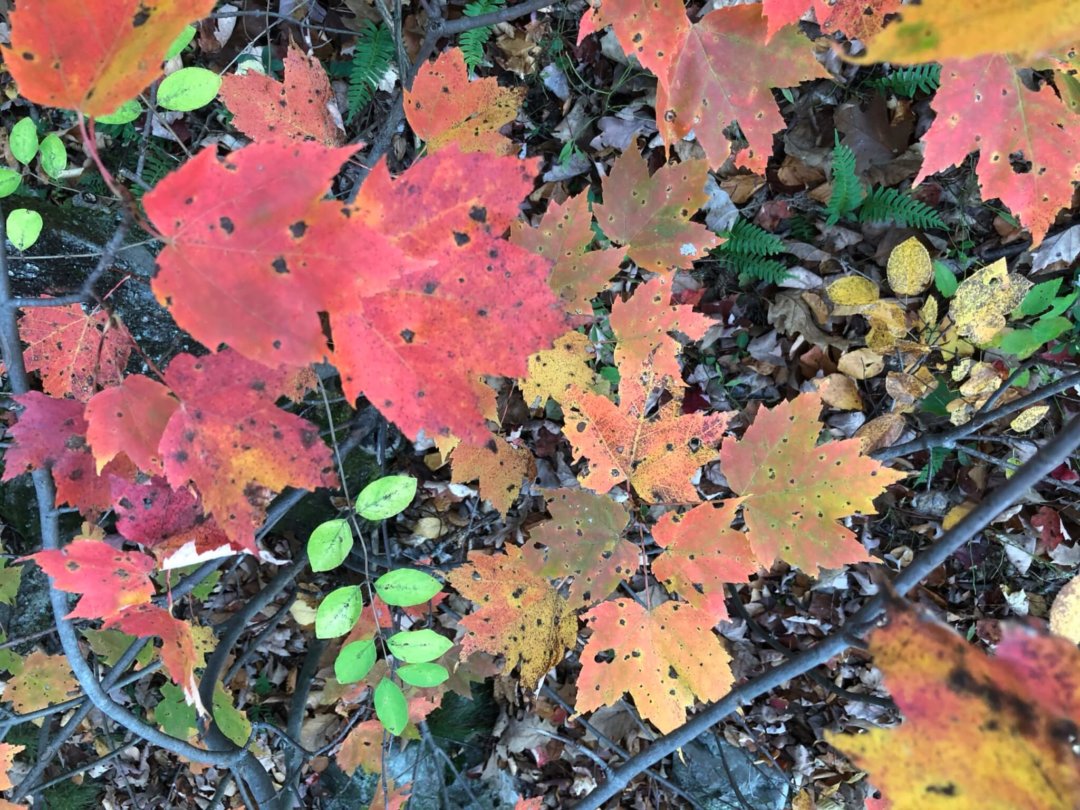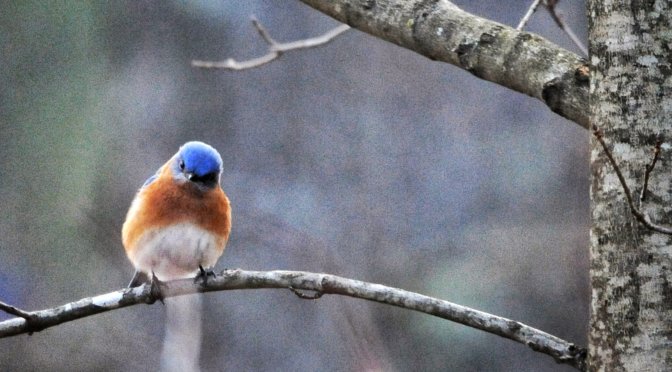At Pine Hill Park Fall 2019/Winter 2020
As late as the first week of Oct., a few summer resident birds could still be found in the park, including yellow-bellied sapsuckers, Eastern phoebe, and wood ducks. Day temperatures could be considered generally cold. And an occasional garter snake could be seen slithering among the leaf litter. The forest seemed alive with chipmunks scurrying about searching for, and storing, their winter food supply of acorns and other available nuts and seeds.

By mid-October, the forest floor was covered in a thick layer of colorful leaves, a layer which would persist throughout the fall and winter months. Eastern newts could still be seen swimming in Rocky and Muddy ponds.
By the first week of November, the seasonal birds had left, the hundreds of migrating waterfowl had left both ponds, the forest had become very quiet, trees were bare of leaves for the most part, and both Rocky and Muddy ponds were still open water, with newts seen swimming along the shoreline.
At the end of the first week of November, a thin layer of ice had formed over a few small areas on the edges of the ponds. On a Nov. 9th walk, I saw only one crow, but plenty of gray squirrels and chipmunks scurrying about. On a Nov. 17th hike, I had noticed that most of the oak trees had finally dropped their last leaves, an inch of snow was on the ground, gray squirrels and chipmunks were continuing their collecting of food, both ponds were covered with about 2 inches of ice, and not a single bird was heard or seen.
Two days before Christmas, temperatures in the low 50s were recorded, causing a major snow melt, but both ponds were now covered with thick ice. On Dec. 28th, Dave and Shelley participated in the annual Audubon Christmas bird count, observing tufted titmouse, mallard, crow, red-tailed hawk, raven, black-caped chickadee, downy woodpecker, white-breasted nuthatch, American goldfinch, hairy woodpecker, pileated woodpecker, and Eastern bluebird.
On Jan. 12th, bluebirds were seen at a birdhouse near the park trailhead. Hopefully, they’ll be nesting in one of those houses in the spring. But because of the proximity to people, that very well may not happen. On this day I saw common resident bird species including downy, hairy, and pileated woodpeckers, tufted titmouse, black-capped chickadees and dark-eyed juncos. Both ponds were covered in a few inches of water caused by recent heavy rains, and temperatures in the 60s! Snow was almost completely gone from the forest floor.
The third week of Jan. found the forest floor covered in about 4 inches of snow, with temperatures near single digits. Many places could be seen where white-tailed deer had been digging up the snow in search of acorns and other nuts.
The first week of Feb. found the lower trails forest floor still bare, but the higher trails all had about an inch of snow covering the ground. The forest was still relatively quiet, but I did observe gray squirrels mating. A RED squirrel, an only occasional sight, was seen in the hemlock forest near Muddy Pond, and tufted titmouse birds were singing, signs that spring was not far away.
By mid-Feb., about 6” of snow was on the ground, many animal tracks were seen throughout the forest including white-tailed deer, coyote, fox, squirrels and chipmunks, many squirrels were scurrying about, snow fleas were observed for the first time, and cardinals were singing.
On Feb. 23rd, while sitting on the edge of Rocky Pond, I could hear rumbles, moans, and groans coming from the pond as ice was moving and cracking underneath the snow covered surface. All streams and ponds frozen over.
March 8th was a gorgeous day. Squirrels and chipmunks could be seen active throughout the park, snow was gone on the lower trails with snow found only in protected, isolated areas throughout the upper trails, Rocky Pond had a few spots of open water, spiders were seen crawling about, and streams were starting to run.
By mid-March, snow was gone from most of the park with just a few patches of snow found only in small protected areas. Both Rocky and Muddy Ponds had some small open patches of water along the perimeter with Canada geese, mallards, wood ducks and hooded mergansers found there. Eastern newts were seen in large numbers along the shores in these open areas. Hairy woodpeckers were heard all throughout the park drumming.
All 50 American chestnut trees survived the winter, but 2 of the trees have small spots on their bark which show outer bark degradation. Whether this is the dreaded blight or not is too early to tell at this time according to a VT State Forester who looked at a picture of the spots I had taken for him to examine.
Shelley observed bluebirds leaving and entering one of the bird houses near the trailhead. We can only hope they decide to nest in one of the houses this spring.
That’s it for this issue. Please stay on the trails and enjoy your walks through the beautiful trails of Pine Hill Park.

